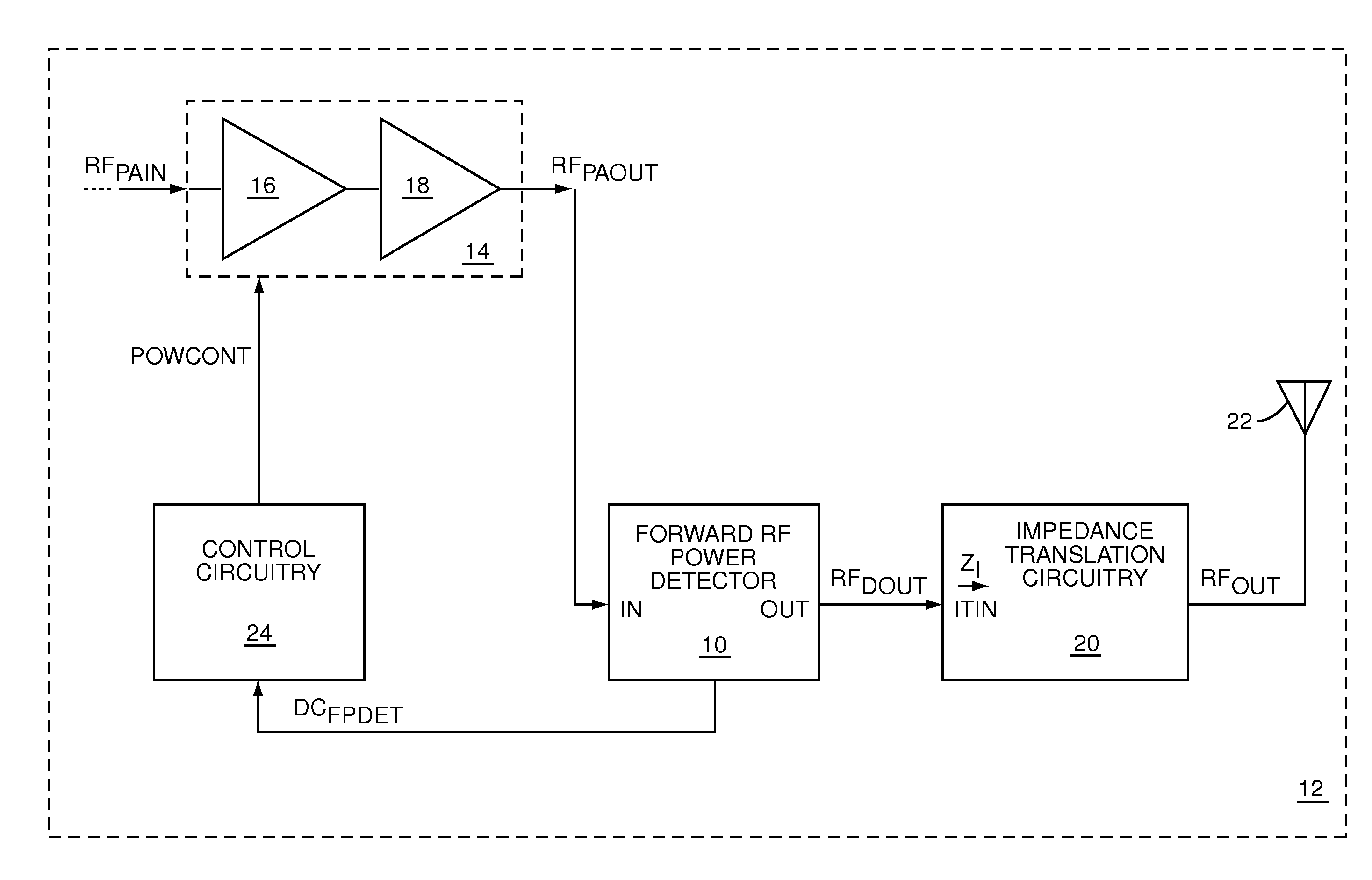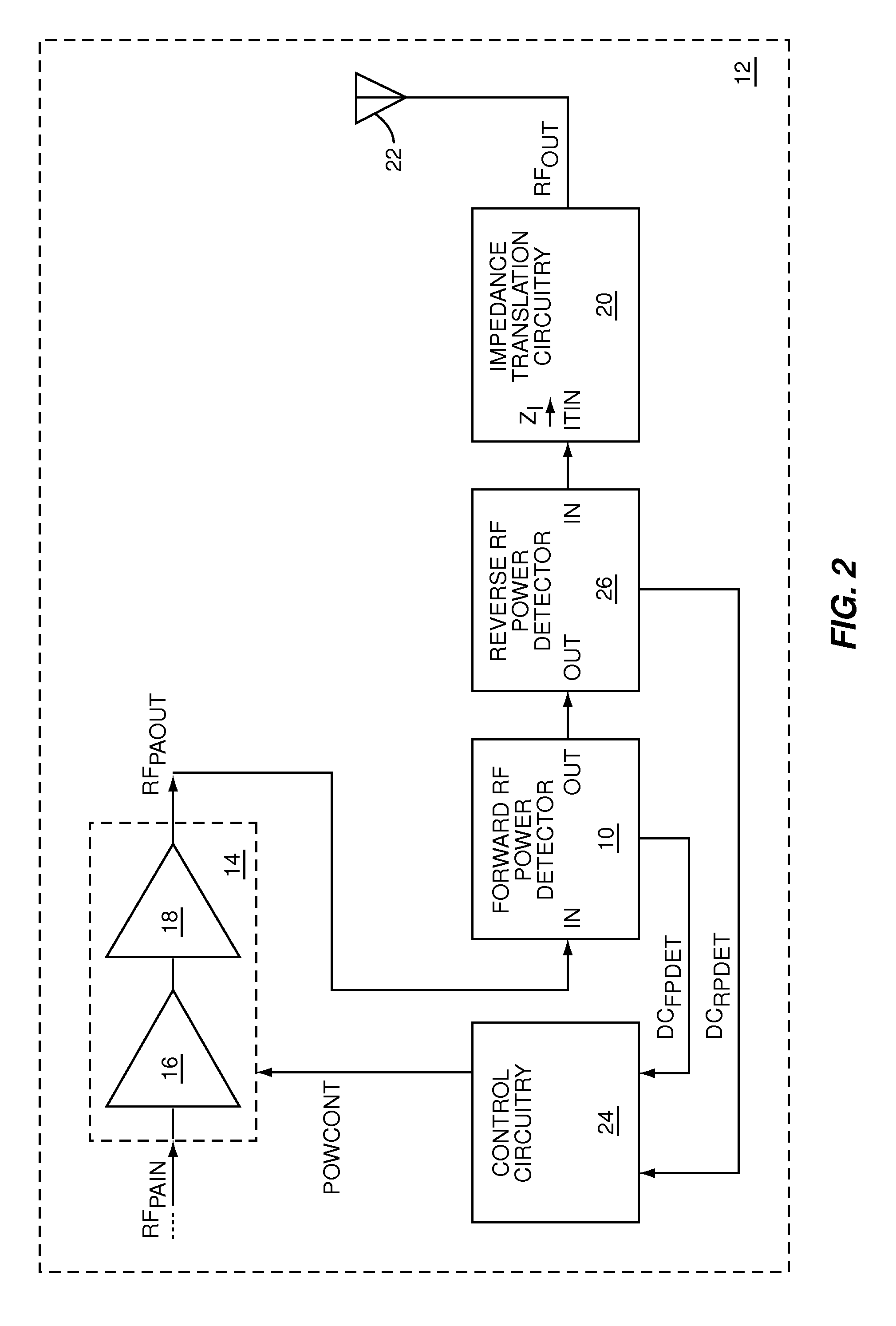Low impedance series coupled radio frequency directional power detector
a directional power detector and low impedance technology, applied in the field of radio frequency directional power detectors, can solve the problems of reducing the forward power fed into the antenna, directional couplers may present an unacceptably high impedence in series with the low output impedance of power amplifiers, and traditional directional couplers may have difficulty in distinguishing forward from reverse power
- Summary
- Abstract
- Description
- Claims
- Application Information
AI Technical Summary
Benefits of technology
Problems solved by technology
Method used
Image
Examples
first embodiment
[0030]FIG. 5 shows the combining circuitry 32 illustrated in FIG. 3. The combining circuitry 32 includes a summing circuit 36, which has a first input IN1 that receives the RF current detection signal RFIDET, a second input IN2 that receives the RF voltage detection signal RFVDET, and a summing output SOUT that provides the RF power detection signal RFPDET, which is approximately equal to the sum of the RF current detection signal RFIDET and the RF voltage detection signal RFVDET.
second embodiment
[0031]FIG. 6 shows the combining circuitry 32 illustrated in FIG. 3. The combining circuitry 32 includes a difference circuit 38, which has a third input IN3 that receives the RF current detection signal RFIDET, a fourth input IN4 that receives the RF voltage detection signal RFVDET, and a difference output DOUT that provides the RF power detection signal RFPDET, which is approximately equal to a difference between the RF current detection signal RFIDET and the RF voltage detection signal RFVDET.
[0032]FIG. 7 adds a current detection circuit 40 and a phase-shift circuit 42 to the current detection circuitry 28 illustrated in FIG. 5. The current detection circuit 40 provides a current detection signal that is based on the RF input current IRFIN, the RF output current IRFOUT, or both, to the phase-shift circuit 42, which applies a phase-shift to provide the RF current detection signal RFIDET. In one embodiment of the present invention, the phase-shift provided by the phase-shift circui...
PUM
 Login to View More
Login to View More Abstract
Description
Claims
Application Information
 Login to View More
Login to View More - R&D
- Intellectual Property
- Life Sciences
- Materials
- Tech Scout
- Unparalleled Data Quality
- Higher Quality Content
- 60% Fewer Hallucinations
Browse by: Latest US Patents, China's latest patents, Technical Efficacy Thesaurus, Application Domain, Technology Topic, Popular Technical Reports.
© 2025 PatSnap. All rights reserved.Legal|Privacy policy|Modern Slavery Act Transparency Statement|Sitemap|About US| Contact US: help@patsnap.com



